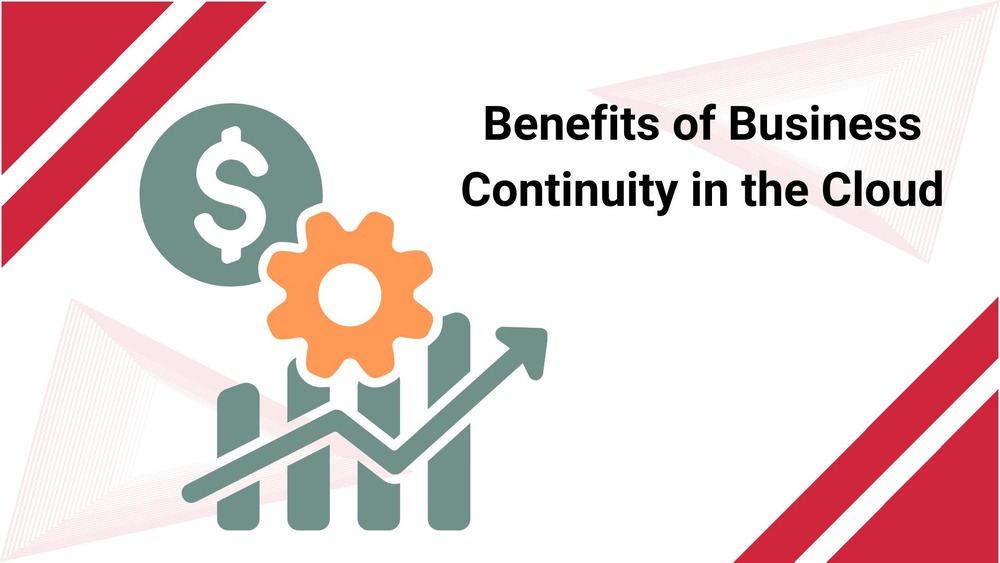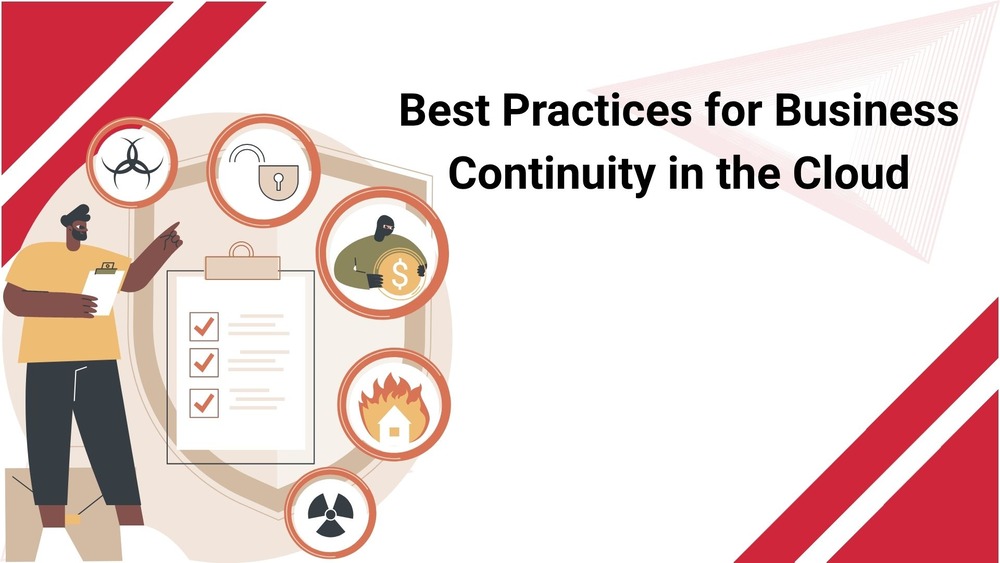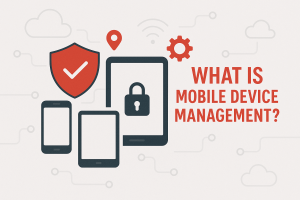Today’s businesses depend heavily on cloud services to keep operations running. From internal systems to customer-facing tools, almost everything is online.
That level of dependency brings convenience, but also risk. Outages, cyberattacks, and natural disasters can halt access in seconds. Without a plan, even a short disruption can cause severe damage.
Business continuity in the cloud helps prevent that. It ensures your systems stay active, your data remains safe, and your team can keep working—no matter what happens.
What Is Business Continuity in the Cloud?
Business continuity in the cloud means your core systems can keep operating even if your main environment fails. It’s a strategy that connects resilience and IT infrastructure.
Cloud technology changes the way continuity works. You’re no longer tied to a single server or location. You can recover faster, scale on demand, and shift workloads without delay.
From On-Prem to Cloud-First Continuity
Old methods relied on physical backups and manual recovery steps, which were slow and often unreliable. With cloud-first continuity, recovery is automatic.
Systems can spin up from backups in minutes. That shift has made the cloud the default for modern businesses. It’s faster, cheaper, and more adaptable.
The Role of Managed IT in Supporting Cloud Continuity
Cloud tools work best with the proper support. A managed IT partner can help design a continuity plan that integrates automated backups, recovery workflows, and system monitoring into your existing infrastructure.
Why Business Continuity in the Cloud Matters
Downtime is expensive. Lost access means lost sales, broken trust, and delayed work. If you wait until disaster strikes, you’re already behind.
The Real Cost of Downtime
According to Gartner, the average cost of IT downtime is over $5,600 per minute, which rises quickly depending on your industry. The longer your systems stay down, the more you risk losing customers, contracts, or compliance.
New Risks Demand a Modern Response
Ransomware attacks are up, global supply chains remain unstable, and remote workers need access from multiple locations. These new challenges demand faster, smarter responses, and cloud continuity gives you the flexibility to meet them head-on.
Benefits of Business Continuity in the Cloud

When the cloud powers your business continuity plan, you gain:
- Scalability and Redundancy: Cloud systems can adjust automatically, adding or shifting resources when demand or disruptions occur.
- Faster Recovery Times: Automated failover helps systems bounce back in minutes, not hours.
- Cost Efficiency: You avoid enormous upfront hardware costs. The cloud lets you scale without overpaying.
- Operational Continuity: Teams stay online, customers stay connected, and you avoid significant losses.
Essential Components of Business Continuity in the Cloud
Backup and Disaster Recovery as a Service (DRaaS)
Your data should be backed up in real time. DRaaS platforms help you restore environments without starting from scratch.
Geo-Redundancy and Multi-Zone Deployments
By spreading your data across multiple regions, you avoid putting all your risk in one place.
Centralized Monitoring and 24/7 Alerts
Constant monitoring helps catch issues before they grow. You can respond faster and with more accuracy.
Support from Cloud-Certified IT Teams
Working with certified professionals ensures your systems are configured to recover quickly and reliably. The right partner can identify weak points in your current setup and help design continuity into your infrastructure.
Industry Use Cases: Business Continuity in the Cloud
Financial Institutions and Compliance-Driven Resilience
Banks and fintechs face strict regulations. Cloud continuity helps them meet compliance standards while reducing service disruption.
Healthcare Providers and HIPAA-Protected Continuity
Hospitals and clinics must protect patient data and keep systems running 24/7. Cloud continuity helps ensure medical records and communication tools stay accessible and secure.
SMBs with Limited IT Resources
Small and medium-sized businesses often can’t afford in-house IT teams. With cloud solutions, they can achieve enterprise-level continuity without the overhead.
Common Challenges with Cloud Continuity Implementation
Misconfigured Backup Policies
If backups aren’t correctly configured, they may be incomplete or fail to restore when needed.
Lack of Testing or Recovery Plans
Many businesses fail to test their continuity systems. Without regular testing, you won’t know if your plan will work.
Over-Reliance on a Single Cloud Provider
Relying on one provider adds risk. A disruption in their service can take down your entire operation.
No Clear Support or Oversight
Without a dedicated expert reviewing your setup, blind spots and delays can go unnoticed. Having outside oversight can make a significant difference.
Best Practices for Business Continuity in the Cloud

Regular Continuity Testing and Fire Drills
Test your systems often. Simulate real-world failure scenarios. This helps you spot gaps before they cost you.
Integrating Cybersecurity into Continuity Planning
Security threats can take systems offline just like natural disasters. Your continuity plan should protect both uptime and data.
Setting Clear SLAs with Providers
Make sure your service-level agreements clearly define expectations. You need to know who’s responsible for what in a crisis.
Working with a Managed IT Partner
A reliable IT partner can help implement, test, and maintain your continuity strategy, keeping your systems stable without draining internal resources.
How to Choose a Cloud Partner for Business Continuity
Look for Industry Certifications and Proven Uptime
Choose providers with credentials like ISO 27001, SOC 2, or HIPAA compliance, depending on your industry’s needs.
Evaluate Their Response Protocols and 24/7 Availability
Your partner should be able to respond to incidents quickly, day or night. Ask how they handle escalations and downtime alerts.
Prioritize Configurable Solutions Over Rigid Packages
Your infrastructure isn’t identical to any other business. Look for providers that adapt to your needs instead of forcing you into a box.
Ensure Alignment with Business Goals
Business continuity isn’t just about tech. It’s about keeping your operations moving. A strong partner will understand how your systems support your bigger picture.
Conclusion
Interruptions are inevitable, but permanent damage doesn’t have to be. Cloud-powered continuity allows your business to respond quickly, recover effectively, and confidently operate even during unexpected events.
Without a tested plan, minor setbacks can grow into major operational failures. With the right cloud infrastructure and expert support, continuity becomes a structured process instead of a rushed reaction.
Adivi helps businesses set up reliable, cost-efficient cloud continuity solutions tailored to their needs. If you’re ready to protect your operations and strengthen long-term resilience, connect with Adivi to build your business continuity strategy.
FAQs
Is business continuity the same as disaster recovery?
No. Business continuity focuses on keeping operations going, while disaster recovery involves restoring systems after a failure. You need both.
How often should I test my cloud continuity plan?
At least once a year. Ideally, test quarterly or after significant infrastructure changes.
What’s the biggest mistake businesses make with continuity planning?
They assume backups are enough. Without a complete plan and testing, recovery can still fail.
Does business continuity require using multiple cloud providers?
Not always. However, having failover options and off-site backups adds protection.
Can I set this up even with a limited internal IT staff?
Yes. Many companies work with third-party experts to design and manage their continuity strategy without needing a large in-house team.


